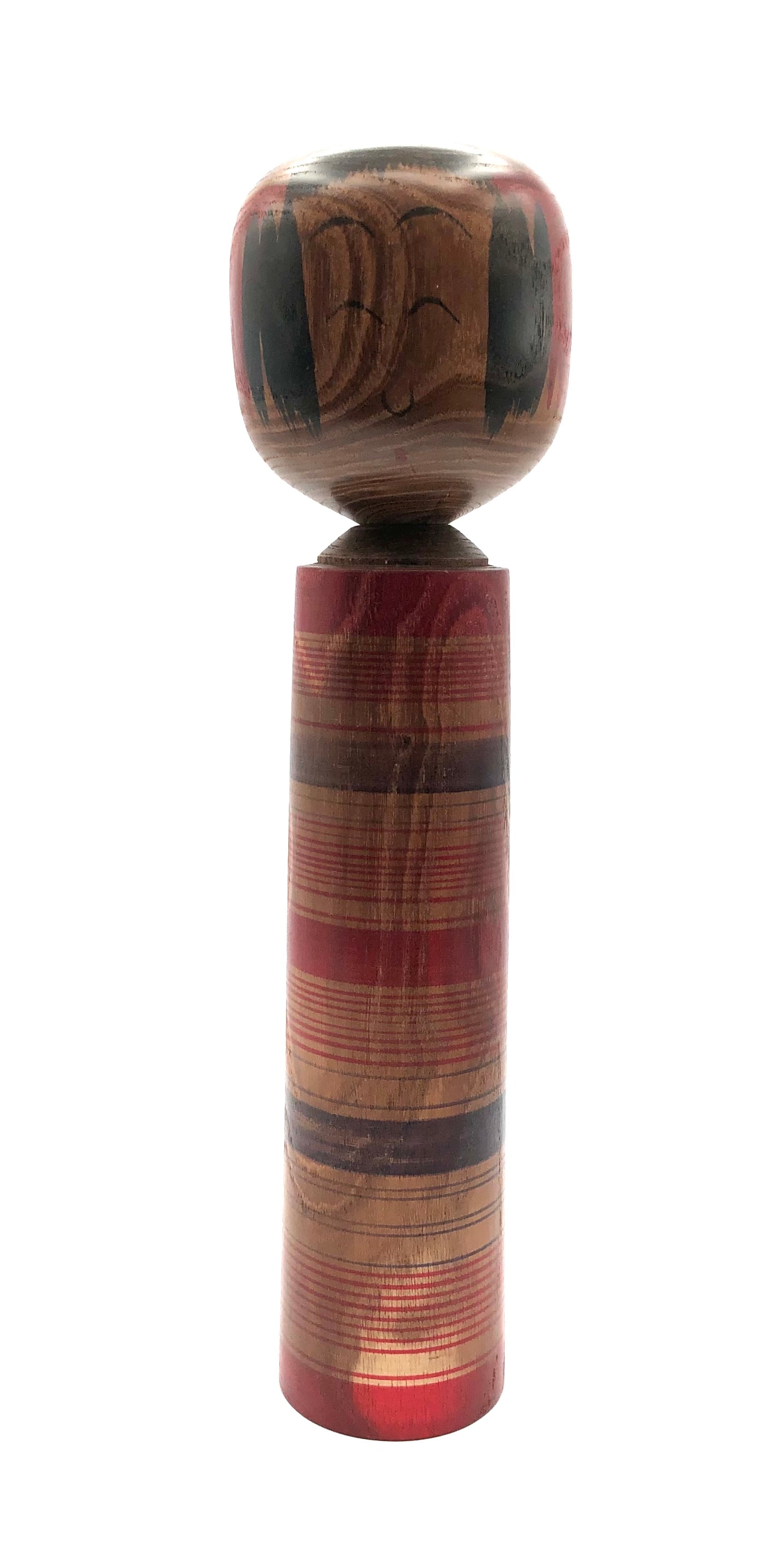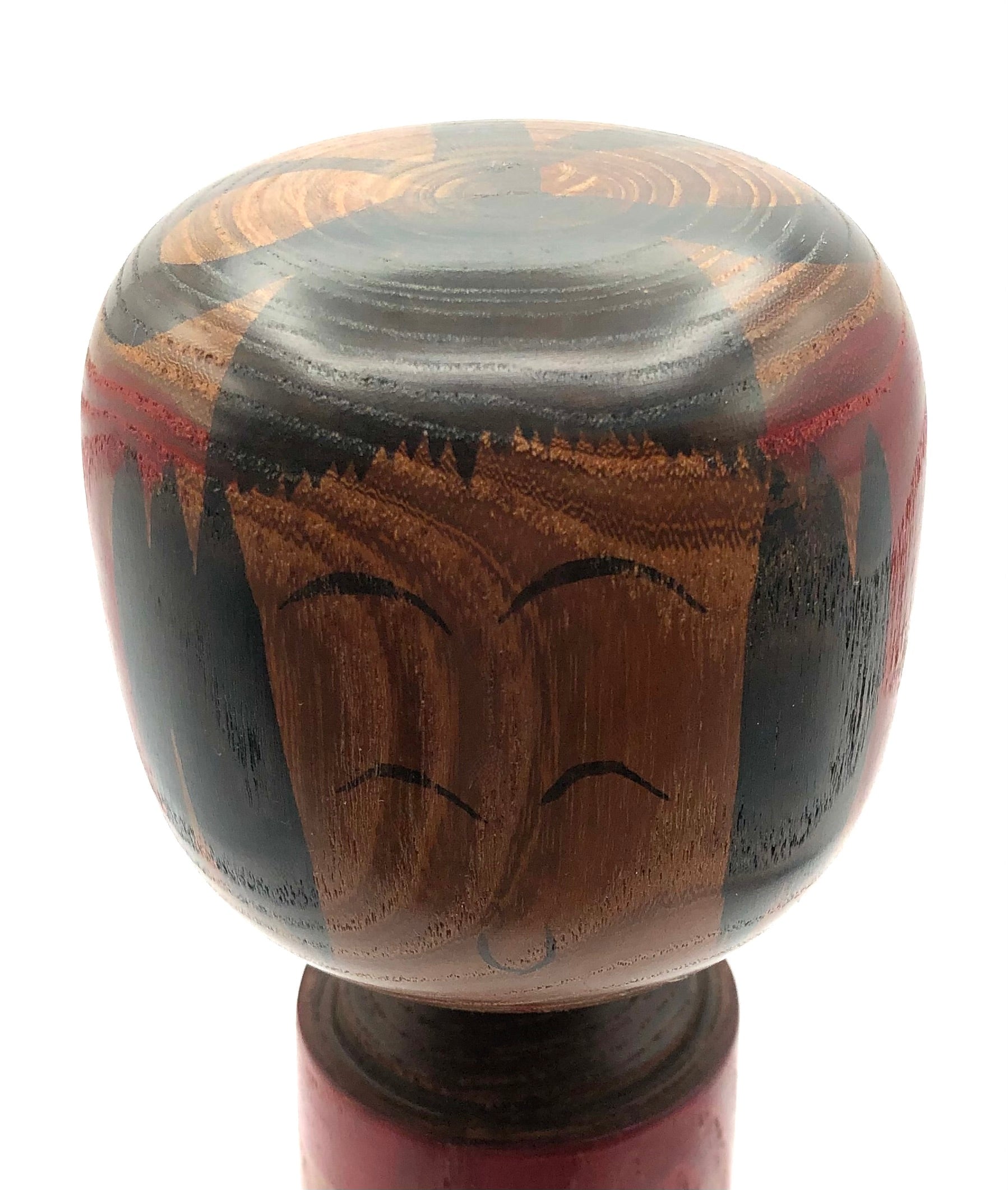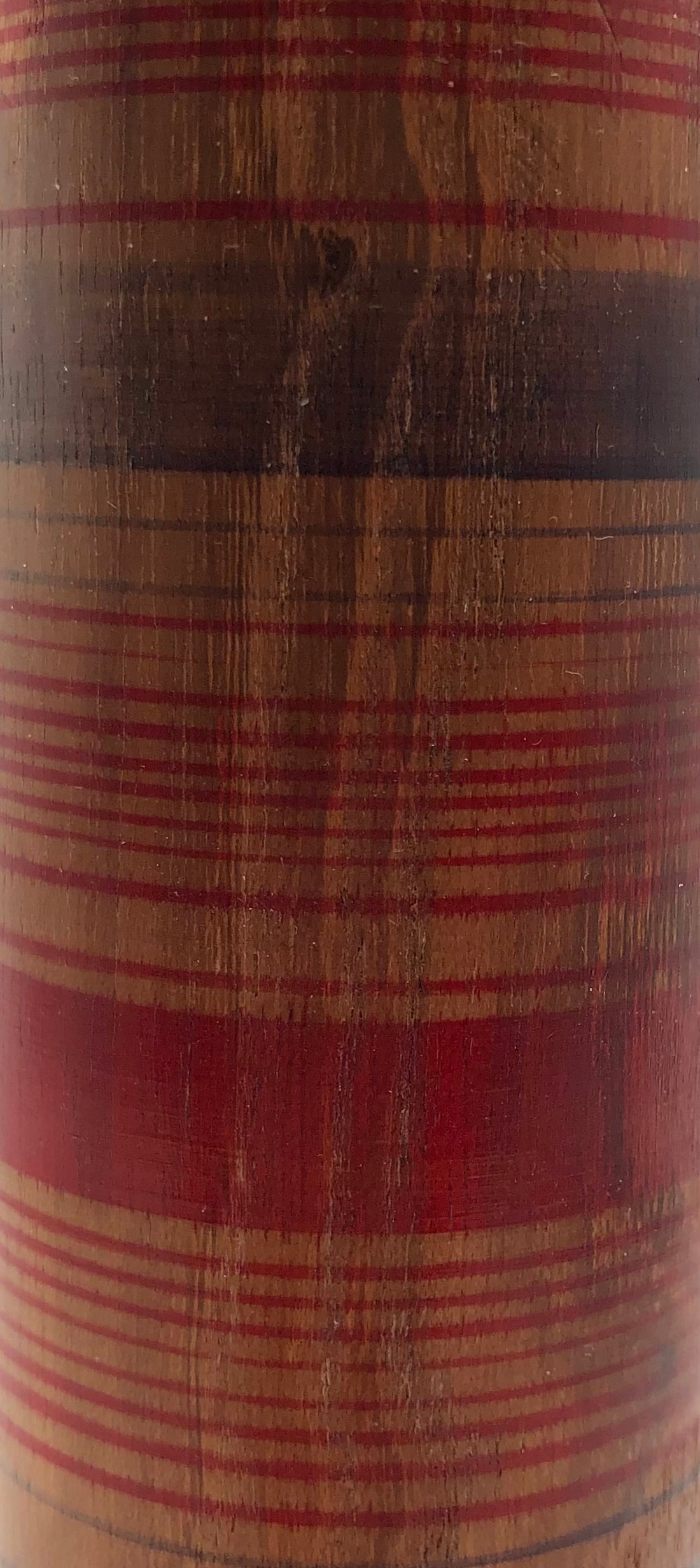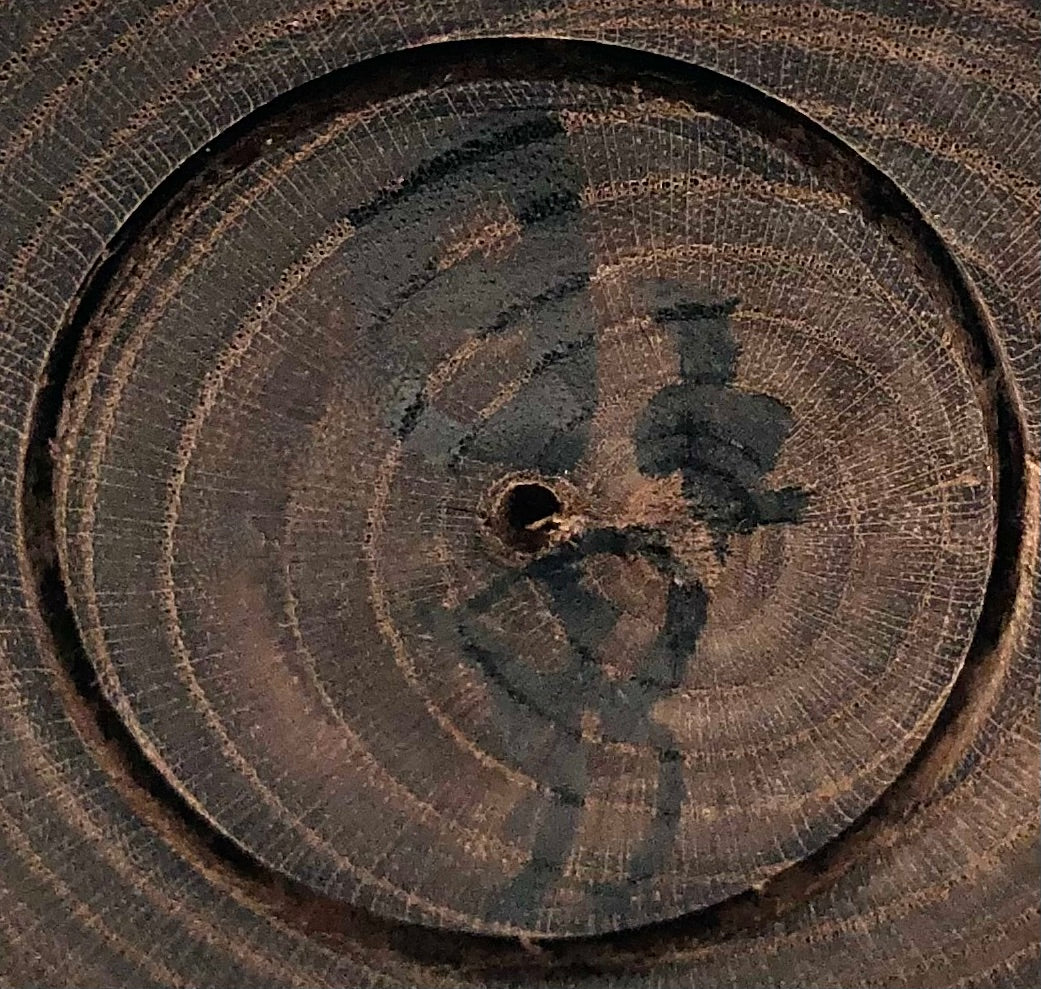



Vintage Sosaku Kokeshi entitled “Mei ware-ryū ni | In the Style of Naruto” by Ishihara, Hideo (1925-1999)
Dimensions: 8-1/2” h
First, why is this doll important to the artist? Ishihara-san, born in Tokyo in 1925, was a highly influential Sosaku Kokeshi artist who began his career by making Traditional Narugo dolls in 1957. His grandfather was the famous artist Onuma Iwatao, of Narugo Onsen, Miyagi, and creator of the "Naruko Kokeshi". This formed the basis of his Kokeshi career.
Shown is one of the first dolls produced by Ishihara, in that it represents his break from the Narugo-Kei moment where he was originally trained, marrying both the traditional and the Sosaku, (Creative) moments. This move in his career was referred to as a Transitional period. Having studied with his grandfather Onuma Iwatao, and trained as a Narugo artist, its face exemplifies that family of dolls, including a straight-shaped body with a definitive feature on the head of long side hair fringes, a drooping single eyelid, a prominent cat’s nose, and an insignificant red mouth. The departing factors are the wide and thin purple and red circular-style treatment that is a traditional and very meticulous method known as ‘Rokoru Moyo’. Though this doll is plain and not as decorative as others of the traditional school, its unique, flowing forms are stronger visually because of its inherent elegance. The Narugo Kokeshi in Traditional standards has been labeled the most sophisticated family of Kokeshi. The doll is signed on the underneath side in script by Ishihara.
The piece was published in the 2022 publication of Sosaku Kokeshi: Celebrating the Major Artists of the Creative Movement. For more information on this artist go to the following link: https://mingeiarts.com/collections/artisan-woodworker-ishihara-hideo-1925-1999.
Condition: A collector, who is interested in the evolution of work by an artist and rounding out one’s collection of Ishihara’s work, would love to have this doll because it shows Ishihara’s movement from one style of Kokeshi making to another. An excellent lathe-turned-creation and tactile experience, for it is outstanding, excellent, impressive, and beautiful. No chips, cracks, breaks, missing elements or restoration, and retains its original details and finish. The piece meets all the standards of the vintage collectible Traditional Narugo-kei Kokeshi by Ishihara, Hideo.

Artisan
Woodworker: Ishihara, Hideo
1925 - 1999
Biographical History:
Hideo graduated from Tohoku University with a degree in science. His grandfather was Iwataro Onuma, the Kokeshi artist credited with originating Naruto Kokeshi, perhaps the most famous style or strain of traditional Kokeshi types. Upon recovering from his illness, he moved to Sendai and began making Sosaku Kokeshi, and in ten years (1959-1969). During his medical treatment, he studied painting under Genichiro Inokuma. He lost interest in the traditional Kokeshi forms for he felt they were stagnating by family standards, and became an avid proponent of Sosaku Kokeshi allowing him the artistic freedom to experiment with various designs and forms. In 1964, he organized the Poetic Craft Exhibition and received more than sixty awards, including the highest honor, the Prime Minister’s Award. He was introduced to the twenty-three countries in Europe and America by NHK. He has sponsored 30 exhibitions in Japan including those at Matsuzakaya Nagoya and Ginza, and four exhibitions in overseas countries. He was one of the founders of the NKAHA, (Nippon Kokeshi Artistic Handicraft Association).
Collector's note – descriptive qualities, standard characteristics & ornamentation styles:
Ishihara-san’s dolls are based on many motifs found in nature and textile design. He loves portraying both young and old characters with differing hairstyles, (traditional and 1950s era). He illustrates numerous kimono styles in both painted form and carving and utilizes simple graphic treatment to emphasize the strong character of his dolls, which bring out the true nature of the wood materials through manipulation of the turned and carved wood. His dolls are always finished in a simple wax coating. It is also not unusual to see Hideo utilize sumi-e’ drawing of faces that have both the ‘one-stroke eye treatments, (Hitofude-me), as well as a variation of expressive renditions.
Explore & Learn More about Woodworker: Ishihara, Hideo